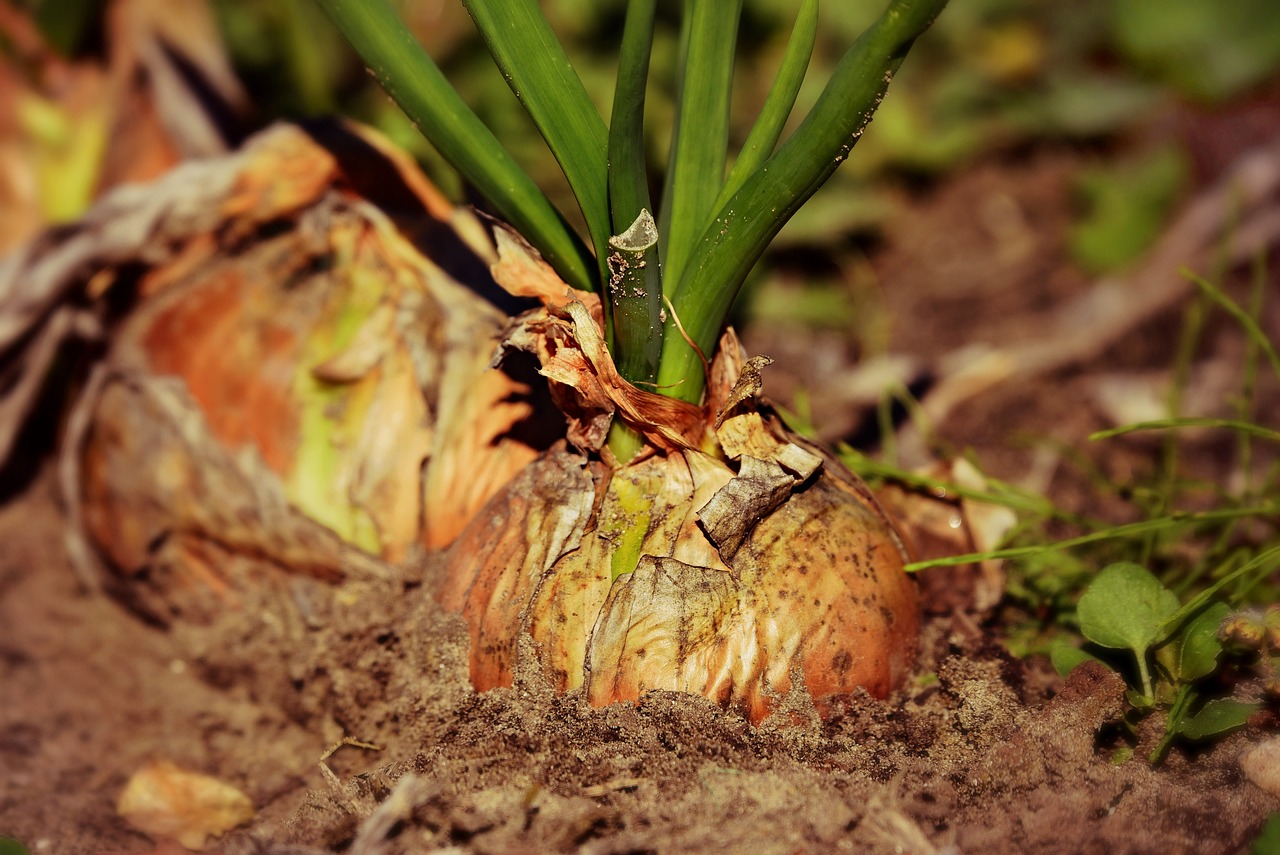Shallow-rooted plants are an often-overlooked solution for enhancing garden health. These plants offer unique benefits, including lower water requirements and reduced soil erosion. They can thrive in various conditions, making them an excellent choice for gardeners seeking resilience and sustainability.
In gardening, the root system plays a crucial role in a plant’s overall health. While many plants develop deep roots to access water and nutrients, shallow-rooted plants have adapted to absorb moisture and minerals closer to the surface. This trait makes them particularly valuable in regions with limited water resources or poor soil quality.

Shallow-rooted plants typically grow in the top few inches of soil. Their roots spread out horizontally rather than digging deep into the ground. This adaptation allows them to utilize rainfall effectively and compete with other plants for nutrients without requiring extensive root systems. Some common examples of shallow-rooted plants include:
- Annual flowers such as marigolds and petunias
- Herbs like basil, cilantro, and chives
- Vegetables, including lettuce, radishes, and spinach
- Ground covers such as creeping thyme and clover
Benefits of Shallow-Rooted Plants
Incorporating shallow-rooted plants into your garden can lead to numerous advantages. Below are some of the key benefits:
- Water Efficiency: These plants require less water than their deep-rooted counterparts. They are particularly beneficial in dry climates where water conservation is essential.
- Soil Erosion Prevention: Shallow roots help anchor the soil, reducing erosion caused by wind and heavy rainfall.
- Quick Growth: Many shallow-rooted plants grow rapidly. This feature can provide ground cover quickly, preventing weed growth.
- Accessibility: Their shallow roots make them easier to harvest and maintain, especially in home gardens.
An additional advantage of shallow-rooted plants is their ability to thrive in compacted soils where deep-rooted plants struggle. They can adapt to various growing conditions, making them suitable for urban gardens, raised beds, or areas with limited space.
It is also worth mentioning that while shallow-rooted plants have many benefits, they may require more frequent watering during hot, dry periods. Understanding the specific needs of these plants will ensure a thriving garden.
Popular Shallow-Rooted Plants for Your Garden
The following table lists popular shallow-rooted plants, their typical growth habits, and their main uses in gardens:
| Plant Name | Growth Habit | Main Uses |
|---|---|---|
| Marigold | Annual flower | Border plant, pest deterrent |
| Basil | Herb | Culinary use, companion planting |
| Lettuce | Annual vegetable | Salads, quick harvests |
| Creeping Thyme | Perennial ground cover | Ornamental use, drought tolerance |
By understanding the benefits and characteristics of shallow-rooted plants, gardeners can make informed choices that enhance their outdoor spaces. These adaptable plants not only contribute to the beauty of a garden but also promote sustainable gardening practices.
Choosing the Right Shallow-Rooted Plants for Your Garden

Selecting the appropriate shallow-rooted plants for your garden can significantly impact the overall health and aesthetics of your outdoor space. Various factors should be considered to ensure that these plants thrive in your specific environment. This section discusses essential criteria and tips for making the best choices.
Consider Your Climate
The climate in which you live plays a crucial role in determining which shallow-rooted plants will flourish. Here are some key aspects to consider:
- Temperature: Understand the temperature ranges of your region during different seasons. Some plants prefer cooler climates, while others thrive in heat.
- Rainfall: Evaluate the average annual rainfall. In areas with low precipitation, select drought-tolerant varieties.
- Sunlight: Determine the amount of sunlight your garden receives daily. Some plants require full sun, while others prefer partial shade.
Soil Type and Quality
The type and quality of soil in your garden can influence plant growth. Shallow-rooted plants generally prefer well-drained soils. Consider the following:
- Soil pH: Test your soil’s pH to see if it is acidic, neutral, or alkaline. Some plants thrive in specific pH ranges.
- Nutrient Content: Ensure the soil is rich in essential nutrients. You might need to amend it with organic matter or fertilizers.
- Drainage: Good drainage is vital to prevent root rot. If your garden has heavy clay or compacted soil, consider raised beds for planting.
Designing with Shallow-Rooted Plants
Incorporating shallow-rooted plants into your garden design can enhance visual appeal and functionality. Here are some design ideas to consider:
- Layering: Use taller shallow-rooted plants at the back of beds and shorter ones at the front for a layered effect.
- Color Schemes: Choose plants with complementary colors to create vibrant displays. Mixing flowers and foliage adds texture and interest.
- Seasonal Interest: Select a variety of plants that bloom at different times to maintain color throughout the growing season.
Companion Planting with Shallow-Rooted Varieties
Companion planting involves growing different plants together to benefit each other. Shallow-rooted plants can be excellent companions for deeper-rooted varieties. Here are some benefits:
- Pest Control: Certain shallow-rooted plants can deter pests that may harm their taller neighbors.
- Nutrient Sharing: Deep-rooted plants can access nutrients deeper in the soil, while shallow-rooted ones utilize surface nutrients.
- Enhanced Biodiversity: A diverse garden attracts beneficial insects and pollinators, improving overall ecosystem health.
Maintenance Tips for Shallow-Rooted Plants
While shallow-rooted plants tend to be easier to maintain, they still require some care. Follow these tips for optimal growth:
- Water Regularly: Monitor soil moisture, especially during dry spells. Shallow-rooted plants may need more frequent watering.
- Mulch: Apply a layer of mulch to retain moisture, suppress weeds, and regulate soil temperature.
- Pruning: Regularly trim dead or damaged foliage to encourage healthy growth and airflow.
By considering climate, soil type, design principles, and maintenance needs, you can create a thriving garden filled with shallow-rooted plants that bring both beauty and functionality to your outdoor space.

Common Challenges with Shallow-Rooted Plants

While shallow-rooted plants offer numerous benefits, they also present certain challenges that gardeners should be aware of. Understanding these challenges can help you take proactive measures to ensure the success of your garden.
Susceptibility to Drought
One of the most significant challenges of shallow-rooted plants is their susceptibility to drought. Since their roots are primarily located near the surface, they may struggle to access moisture during dry periods. Here are some strategies to mitigate this issue:
- Frequent Watering: Establish a regular watering schedule, especially in hot weather. Aim to water early in the morning or late in the evening to prevent evaporation.
- Soil Amendments: Incorporate organic materials like compost to improve soil structure and moisture retention.
- Drip Irrigation: Consider installing a drip irrigation system for efficient and targeted watering.
Pest and Disease Vulnerability
Shallow-rooted plants can be more vulnerable to certain pests and diseases. The close proximity of their roots to the soil surface can facilitate the spread of fungal diseases and attract pests. To combat these issues, consider the following:
- Regular Inspection: Monitor plants for signs of pests or disease. Early detection can prevent larger infestations.
- Cultural Practices: Implement crop rotation and diversify plantings to disrupt pest life cycles.
- Organic Treatments: Use organic pest control methods such as neem oil or insecticidal soap when necessary.
Competition from Weeds
Weeds can pose a significant threat to shallow-rooted plants, as they compete for nutrients, water, and light. Here are effective ways to manage weeds in your garden:
- Mulching: Apply a thick layer of mulch around your plants to suppress weed growth and retain soil moisture.
- Hand Weeding: Regularly remove weeds by hand, being careful not to disturb the shallow roots of your desirable plants.
- Ground Covers: Planting ground covers can help outcompete weeds while enhancing the overall beauty of your garden.
Seasonal Considerations for Shallow-Rooted Plants
Understanding the seasonal needs of shallow-rooted plants is essential for their success. Different seasons require varying care and attention. Here are some seasonal considerations:
Spring Care
As the growing season begins, it is crucial to prepare your garden for optimal growth. Consider the following steps:
- Soil Preparation: Test and amend your soil as necessary. Incorporating compost will boost nutrient content.
- Planting Schedule: Plant shallow-rooted annuals and vegetables after the last frost date for best results.
- Pest Monitoring: Keep an eye out for emerging pests as temperatures rise.
Summer Maintenance
The summer months can be challenging due to heat and moisture demands. Focus on these maintenance tasks:
- Consistent Watering: Increase watering frequency during hot spells to keep shallow roots hydrated.
- Fertilizing: Apply a balanced fertilizer to support ongoing growth during peak season.
- Pest Management: Continue monitoring for pests and diseases, treating issues promptly.
Autumn Preparations
As the growing season winds down, take steps to prepare your garden for winter:
- Harvesting: Collect mature vegetables and herbs before the first frost.
- Planting Cover Crops: Introduce cover crops like clover to improve soil health over winter.
- Disease Cleanup: Remove any dead or diseased plant material to prevent issues in the following year.
By recognizing and addressing potential challenges, you can create a thriving environment for shallow-rooted plants throughout the seasons. Proper care and attention will yield a vibrant garden that continues to flourish year after year.
Maximizing the Benefits of Shallow-Rooted Plants
To truly harness the potential of shallow-rooted plants, it is essential to implement practices that maximize their benefits. These practices not only enhance the health and beauty of your garden but also contribute to sustainable gardening efforts. Below are some additional strategies to consider:
Integrating Technology in Gardening
Modern technology can significantly aid in the care of shallow-rooted plants. Here are a few tools and techniques that can help:
- Soil Moisture Sensors: These devices can monitor soil moisture levels and alert you when watering is needed, ensuring your shallow-rooted plants receive adequate hydration.
- Gardening Apps: Utilize mobile apps that provide reminders for watering, fertilization, and pest control based on your specific plant varieties.
- Weather Forecasting Tools: Stay informed about upcoming weather conditions to prepare your garden for extreme temperatures or rainfall.
Creating a Pollinator-Friendly Environment
Shallow-rooted plants can play a role in supporting local biodiversity, particularly pollinators. Encouraging pollinators in your garden can lead to better yields and healthier plants. Consider these tips:
- Diverse Plant Selection: Include a variety of flowering shallow-rooted plants that bloom at different times to attract pollinators throughout the growing season.
- Nectar-Rich Plants: Choose plants known for their nectar production, such as lavender and echinacea, to provide food sources for bees and butterflies.
- Avoid Pesticides: Minimize pesticide use whenever possible, opting for organic methods to protect beneficial insects.
Final Thoughts
Shallow-rooted plants represent a versatile and sustainable option for gardeners looking to create vibrant and resilient gardens. Their ability to thrive in diverse conditions, along with their low water requirements and unique growth habits, make them an excellent choice for various gardening situations.
Throughout this article, we explored the numerous benefits of shallow-rooted plants, including their role in improving soil health, enhancing biodiversity, and providing aesthetic value. By understanding the specific needs of these plants and implementing effective gardening practices, you can cultivate a thriving garden that not only meets your aesthetic desires but also supports ecological health.
As you embark on your gardening journey with shallow-rooted plants, remember the importance of regular maintenance and seasonal preparations. By being proactive about challenges such as drought, pests, and weeds, you can ensure that your garden remains lush and productive year after year. Embracing shallow-rooted plants is not merely about beautification; it is an investment in sustainable gardening practices that can lead to long-term environmental benefits.
In conclusion, whether you are a seasoned gardener or just starting out, incorporating shallow-rooted plants into your landscape will yield benefits that extend beyond the garden bed. With thoughtful planning and care, these plants can be a surprising yet effective solution for creating a beautiful and sustainable outdoor space.
